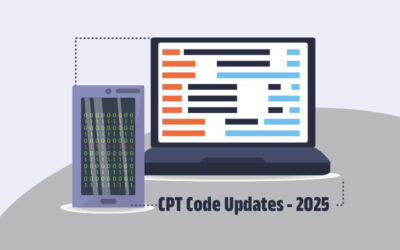Antimicrobial resistance (AR) is a global concern and among the five most important serious public health threats in the US, according to a January 2019 Contagion report. In fact, on its website, the CDC states, “Antimicrobial resistance is one of the biggest public health challenges of our times”. A 2013 CDC report noted that more than two million people in the country fall ill every year with antibiotic-resistant infections, with 23,000 dying due to it. It is critical for infectious disease physicians to ensure correct diagnosis, treatment, and coding of antimicrobial resistance. However, with changing guidelines, coding medication resistance to super bug infections can be a challenging task. A medical billing and coding company that specializes in infectious disease coding can ensure the necessary support.
Antibiotic Resistance Defined
The Association of Clinical Documentation Integrity Specialists (ACDIS) defines antibiotic resistance as “the ability of bacteria and other microorganisms to resist the effects of an antibiotic to which they were once sensitive”.
Antibiotic resistance occurs when microorganisms such as bacteria, fungi, viruses, and parasites become resistant to the antibiotics designed to kill them and continue to grow. The CDC’s Antibiotic Resistance Threats in the United States, 2013 ranked 18 threats (bacteria and fungi) into three categories based on level of concern to human health-urgent, serious, and concerning.
Contagion reported the most serious super bugs facing the US in 2019 are:
- Clostridium difficile
- Carbapenem-resistant Enterobacteriaceae (CRE)
- Drug-resistant Neisseria gonorrhoeae
- Methicillin-resistant Staphylococcus aureus (MRSA), and
- Extended-spectrum beta-lactamase producing Enterobacteriaceae
- Candida auris
Enter ococcus, klebsiella, acinetobacter, pseudomonas are other multi-drug resistant infections that pose threat to human health. On its website, the CDC states that it is working towards releasing an AR Threats Report in fall 2019.
Root Causes of the Antibiotic Resistance Crisis
Antibiotics are powerful medicines used to treat diseases caused by bacteria. They prevent the reproduction of bacteria or they kill the bacteria. Antibiotics have saved lives, and proved successful in treating chronic diseases and infections that can occur in patients receiving chemotherapy treatments or in people who have complex surgeries. However, overuse of antibiotics has dissipated their benefits.
The root causes of antibiotic resistance are:
- Inappropriate use – for example, prescribing antimicrobials for a viral infection
- Prescription based on inappropriate diagnostics or over-prescription – prescribing an antimicrobial “just-in-case” or prescribing a broad-spectrum antimicrobial when a specific antibiotic may be more suitable
- Patients not completing the entire antibiotic course
- Overuse of antibiotics in agricultural feed and fish farming
- Poor infection control in health care settings
- Poor hygiene and sanitation
- Insufficient new antibiotics under development
Absence of effective antimicrobials for the prevention and treatment of infection leads to prolonged illness, disability, and death. New resistance mechanisms pose high risks for medical procedures such as organ transplantation, cancer chemotherapy, diabetes management and major surgery. The cost of treating antimicrobial resistance (AR) is much higher than for treating non-resistant infections owing to lengthier stays in hospital, extensive testing, and more costly drugs.
ICD-10 Coding for Antibiotic-resistant Infections
Treating medication resistance is a formidable challenge for hospitals and practitioners. In addition to costly patient isolation methods, coding antibiotic-resistant infections can significantly impact revenue, especially if patients get these infections during a hospital stay (www.hfma.org). Healthcare providers need to correctly diagnose the infection and report it using the correct codes.
The ICD-10 codes for resistance to antimicrobial drugs are as follows:
- Z16Resistance to antimicrobial drugs
- Z16.1 Resistance to beta lactam antibiotics
- Z16.10 Resistance to unspecified beta lactam antibiotics
- Z16.11 Resistance to penicillins
- Z16.12 Extended spectrum beta lactamase (ESBL) resistance
- Z16.19 Resistance to other specified beta lactam antibiotics
- Z16.2 Resistance to other antibiotics
- Z16.20 Resistance to unspecified antibiotic
- Z16.21 Resistance to vancomycin
- Z16.22 Resistance to vancomycin related antibiotics
- Z16.23 Resistance to quinolones and fluoroquinolones
- Z16.24 Resistance to multiple antibiotics
- Z16.29 Resistance to other single specified antibiotic
- Z16.3 Resistance to other antimicrobial drugs
- Z16.30 Resistance to unspecified antimicrobial drugs
- Z16.31 Resistance to antiparasitic drug(s)
- Z16.32 Resistance to antifungal drug(s)
- Z16.33 Resistance to antiviral drug(s)
- Z16.34 Resistance to antimycobacterial drug(s)
- Z16.35 Resistance to multiple antimicrobial drugs
- Z16.39 Resistance to other specified antimicrobial drug
Guidelines for using ICD-10 Code Z16
The Z16 codes are provided for use as additional codes to identify the resistance and non-responsiveness of a condition to antimicrobial drugs.
The ICD-10 Official Guidelines for Coding and Reporting state: “Many bacterial infections are resistant to current antibiotics. It is necessary to identify all infections documented as antibiotic resistant. Assign a code from category Z16, Resistance to antimicrobial drugs, following the infection code only if the infection code does not identify drug resistance”.
The codes in the Z16 category are to be used as additional codes to identify the resistance and non-responsiveness of a condition to antimicrobial drugs.
Type 1 Excludes
- Methicillin resistant Staphylococcus aureus infection (A49.02)
- Methicillin resistant Staphylococcus aureus pneumonia (J15.212)
- Sepsis due to Methicillin resistant Staphylococcus aureus (A41.02)
A 2016 ICD-10 Monitor article lists the steps to code antibiotic resistance as follows:
- Identify the infection/type of bacteria – coders need to review supporting documentation, including culture reports, physician progress notes, medication administration records, and any other ancillary testing used to identify resistance
- Assign a Z code to describe the resistance (e.g., resistance to antimicrobial drugs – Z16.10-Z16.39).
- If the patient has been antibiotics for a long time, this should also be coded.
Medicare Payment Changes to encourage Antibiotic Development
According to a recent news report from the Center for Infectious Disease Research and Policy (CIDRAP), Medicare is making changes in the way hospitals are paid for use of new antibiotics and for treating patients with antibiotic-resistant infections.
Under bundled payments or Diagnostic Related Groups (DRGs), hospitals get a fixed fee for each Medicare patient they treat, but those payments presume the use of older antibiotics. The hospital is not reimbursed appropriately if the physician treats the patient using a newer, more effective, expensive antibiotic. This payment structure undervalues antibiotics and discourages antibiotic innovation.
According to CMS administrator Seema Verma, MPH, the new Medicare payment policies being made through the Fiscal Year (FY) 2020 Inpatient Prospective Payment System (IPPS) rule aim to address the “misaligned” financial incentives for prescribing antibiotics that encourage the use of older, cheaper antibiotics over newer, more expensive antibiotics (www.cidrap.umn.edu).
CMS is also changing the severity level designation for 18 ICD-10 codes that specify a drug-resistant infection to “CC,” which indicates the presence of a complication or comorbidity in an inpatient that requires the allocation of more resources to provide care.
Physicians need to focus on identifying, documenting and managing antibiotic-resistant infections effectively. From a coding and billing standpoint, hospitals need to keep a close watch on new infections and ICD-10 code updates to report these conditions. With proper physician documentation, medical billing outsourcing companies that provide infectious disease billing and coding services can help healthcare providers report medication resistance correctly.




